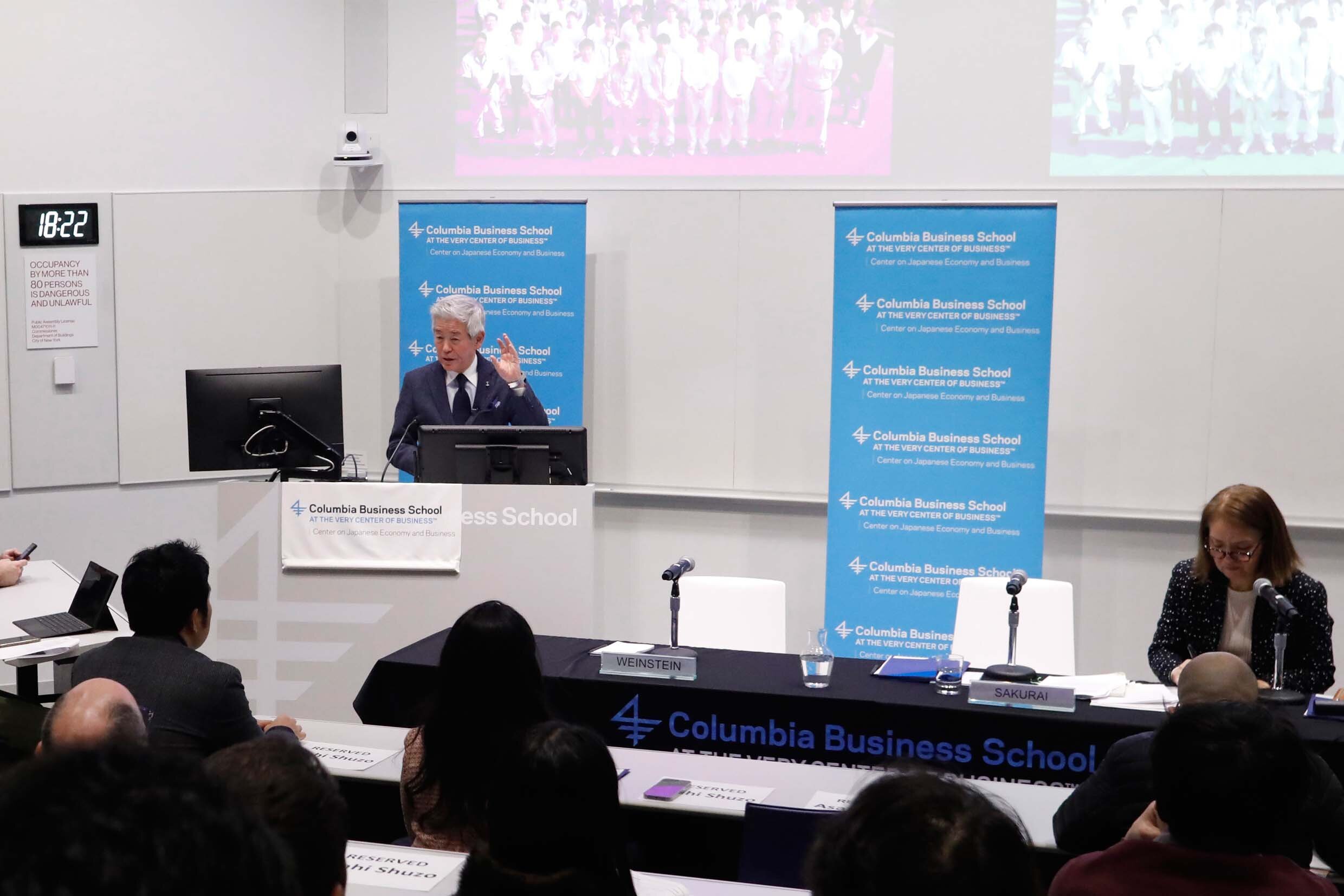
Columbia University is located in New York. Former president Clinton relocated the university to Harlem, which had been called the most dangerous area in New York, and it is said that the university's relocation dramatically improved public security in the surrounding area. Coincidentally, it is also located near the Yankees stadium.
I was asked by the Columbia University to give a talk on DASSAI at their business school. In fact, the brewery in Hyde Park was to be completed around this time, and I was scheduled to be stationed in New York. So I accepted the university's request, but as you know, its completion has been delayed. However, I cannot refuse their request now. Thus, I went to New York for five nights and seven days to give the talk.
By the way, it was extremely cold. Even during the daytime, it was -11 ℃ in Manhattan. In Hyde Park where the brewery is located, it was -18 ℃. It was not that my face hurt or my ears ached, but when I entered a warm room, I felt the blood started to circulate through my face and I was barely able to recognize the pain.
I wore HEATTECH "Ultra Warm" over another with the plus alpha, and managed to get through it. Long live Uniqlo! I don't mean to sound like a certain professor of business administration, but I thought "Japanese older men can't get through winter without HEATTECH," especially in New York!
Columbia University, which is located in the frigid coldest part of the country, told us in advance that they were preparing a second venue for my talk, which would be broadcast via satellite. It was because the number of participants exceeded the maximum of 70 soon after the application period had started.
I was also asked a month in advance to give a brief outline of what I was going to talk about, so I was thinking to start with "the footsteps of a sake brewery deep in the mountains of Yamaguchi that emerged from a losing team, and the difficulties of company succession from my father that I felt during that transition”.
However, I realized that it might be meaningless to talk about that topics to people in USA where “what sake is” was not acknowledged as widely as in Japan, although the story might be interesting. This was a chance I was given. I was going to New York only for this purpose, and to pay a certain amount of money for the flight, whose price went up even more since Covid-19 had emerged and was not as cheap as it used to be. If we can't talk about "what sake is" as a sake brewery, what's the point?
I am not saying that it is wrong to promote sake brands, but I have often seen the faces of people overseas who are fed up with being told endless stories about rice and sake production, so I thought it was necessary to talk more about the essence of sake as a sake brewery.
What I talked about was that sake was born out of the geographical conditions of Japan, and that it exists along with the history of the Japanese people. I focused on the population of Japan at the beginning of the Meiji era, when there was no hope of a population explosion due to the Industrial Revolution, and the population was 34 million. The backbone supporting this population was not a rice cultivation based on extensive agriculture but a rice cultivation based on intensive agriculture with high yield per unit of land through the development of technology.
This has had a profound influence on Japanese society and thinking. As a result, it has also had a profound influence on sake producing. This is the same as the fact that wine is greatly influenced by the history of the land and its people in Europe.
DASSAI has taken this approach to sake producing even further, and has positioned technology and labor as the most important aspects of sake producing. I spoke about this at Columbia University as an introduction.
I arrived at Columbia University an hour before the talk was to start, and of course, English was spoken all around me and the number of Japanese was sparse. A microphone was also on my lapel. While I was waiting in the waiting room, I felt a bit nervous, thinking, "I've just taken on a big responsibility.”
Well, my time had come, and the talk, which I was afraid of but dreaded, was somehow completed with the help of an excellent interpreter whom I have been asking for since my previous talk at the University of Tokyo New York Office. As usual, the social gathering with DASSAI afterwards was a good one. The students seemed to be enjoying themselves.
The talk itself is about five A4 pages long, so I have included it in the "Talk at Columbia University ②," which is also being distributed today. We would appreciate it if you could read it when you have time.
